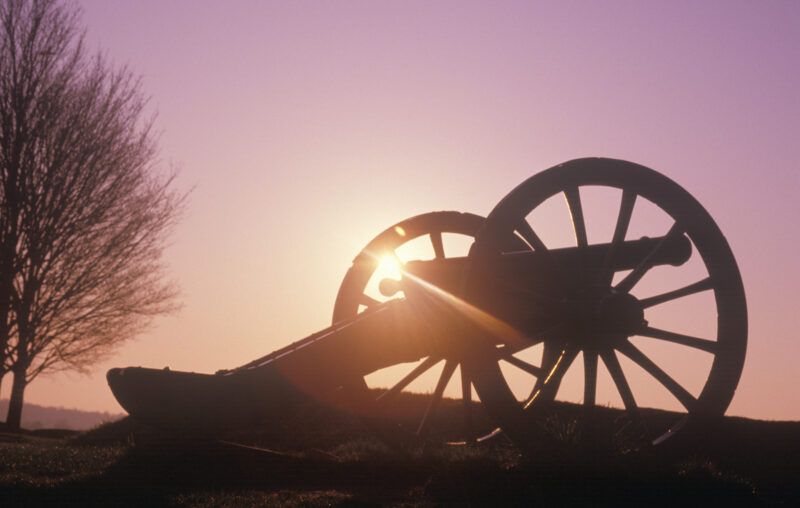A Well-Regulated Militia is Necessary to the Security of a Free State

Since 2020, two popular slogans have come to dominate the public imagination regarding the police. Certain progressives and liberals have issued the call to “Defund the Police” for a host of reasons. In response, conservatives cry out to “Back the Blue.” There is a danger in both these slogans when turned into policy. It seems that defunding the police has invited a crime wave to wash over the defunded jurisdictions. On the other side, backing the blue seems to be a dangerously deferential pose in the face of an increasingly militarized police force. Instead of one or the other policy in full, or a compromise between the two, we might remember the full content of the Second Amendment.
The initial clause of the Second Amendment deserves more attention than it receives. Liberals often interpret it away as favorable to gun control. Conservatives tend to ignore it in favor of the individual right to keep and bear arms. Those who ratified the Bill of Rights made the language clear and determinate: the militia is a necessary institution to a free state. Between “Defund the Police” and “Back the Blue,” the purpose of the Founders seems long lost. Is it time for citizens to take a more active role in securing the peace of their communities? A look into the news of crime and policing suggests so.
Finding news of a crime and violence wave sweeping the country since 2020 is easy; finding hard data in 2022 to track its progress may be a little more difficult. According to FBI crime statistics, violent crime increased 5.6 percent from 2019 to 2020. Murders jumped 30 percent from 2019 to 2020. In 2021. The crime rate remained at 2020’s elevated level. With 2022 nearing its end, confusion and dispute loom as the FBI has a new system for local governments to report their crime figures. New York City and Los Angeles are both giving the impression that they will opt out of the voluntary reporting system, adding force to the idea that crime is out of control in those cities. They simply do not want people to know how bad it has gotten. Still, the existing data may be difficult to assess. What do the statistics even tell us if the major cities of the country do not report their data?
Austin, the capital of Texas, may be a fair glimpse of putting Defund the Police into effect. In August of 2020, the Austin City Council voted to cut $150 million from the police budget of $434 million. The state government was not amused by the Austin City Council’s action, to say the least. Much of that funding was restored after pressure from the state, but local government redirected it toward new techniques and programs rather than traditional policing expenditures. In particular, the budget did not fund new hires for vacant positions. The Austin Police Department retains about two hundred vacant positions across the board. Ranking officers claim their short-staffed department cannot police effectively for that reason. In the wake of these locally adopted policies, Austin has seen homicides increase from 33 in 2019 to 83 in 2021. As of August 2022, crimes against persons (-2 percent) and property (-4 percent) are slightly down from 2021 according to the Austin Police Department. However, the department remains adamant that the city police force is critically short of personnel.
Where the police are not being defunded, it seems they are awash in equipment. Especially since September 11, 2001, police departments across the country have been on the receiving end of surplus military equipment. In section 1033 of the 1997 National Defense Authorization Act, the Department of Defense gained permission to give its surplus materials to state and local policing agencies. Through that program, approximately $7.4 billion worth of machinery and gear has been allotted from the Defense Department to police forces across the country. Thanks to the national government’s generous supply, the police have increasingly militarized their function and efforts in fighting the wars on drugs, crime, and terror.
In a related area, the national bureaucracy is arming itself as well. According to American Transparency, an oversight group, executive branch agencies are also militarizing, including the Internal Revenue Service and the Veterans Affairs. The watchdog group details their findings in a 2020 report titled “The Militarization of the U. S. Executive Agencies.” Even NASA has special agents equipped with automatic weapons now.
The quantifiable results of militarizing the police are uncertain. Research by Jonathan Mummolo in the Proceedings of the National Academy of Sciences argues that militarized SWAT units do not reduce crime or enhance police safety, but the presence of militarized police does lower police reputation among civilians. According to his evidence, police militarization is a lose-lose proposition. However, some research by Vincenzo Bove and Evelina Gavrilova in the American Economic Journal: Economic Policy suggests the contrary. According to those authors, equipping police departments with military gear is a cost-effective way to reduce and deter crime. Both research papers predate the increase of crime beginning in 2020.
Even if providing military equipment to police forces proves cost-effective in the short run, the long-term consequences may turn out opposite. Becoming familiar with the gear, police agencies are likely to turn into an interest group lobbying for ever more. The national armed forces will happily turn over their gently used equipment to justify the purchase of new gear. The cost of the program can increase and increase, as so often happens with federal programs. The benefits, if they exist, will only remain constant. Even if the program maintains its cost-efficiency, a different question is whether a militarized police force is something proper to America at all.
The Founding Fathers, authors of the Second Amendment, would be aghast at the militarization of the police and executive agencies. In truth, they may well support defunding the police, but for different reasons than today’s proponents of that slogan. As the amendment makes clear, the militia is necessary to keep the peace in each free state of the Union. The militia is not an amateur or part-time police force in place of professionals, to be sure. Rather, the militia as an institution that requires citizens to fulfill a certain duty which is foundational to a democratic republic. Historically, a militia is the armed body of the citizenry, a citizenry which owns weapons, trains in their use, and elects captains to organize their local units. In the early decades of the United States, the militia existed according to that tradition. Congress codified these terms of service in the Militia Act of 1792. Every able-bodied male from age eighteen to forty-five was responsible for service. Each militiaman was required to provide for his own weapon and accouterments as well, as described in law. When not called into national service, the militia was to be “well-regulated” (meaning equipped, organized, and trained) by the respective states. Despite the attention given to the matter in both states and the national government, the militia fell into a state of general disrepair by the 1830s.
To illustrate the sad state of the militia, David Claypoole Johnstone painted a farcical scene in an 1828 water-color called “Militia Muster.” When and where the militia was still required to meet, the gathering had become comical. The painter attempted to capture that by showing a motley array of men lined up as if ready for duty, but not looking soldierly at all. One militiaman has plucked the hat of his neighbor onto his upright bayonet. Another militiaman winces in pain as he grabs his foot. His neighbor has stomped his toes with the butt of his musket. Another militiaman carries a cornstalk in place of a musket. The diminutive captain overseeing the mustered debacle is portrayed as a clone of Napoleon – short of stature, dandy in dress, and imperious in pose. The painter seems to have reflected the sorry status of the militia only fifty years after the United States declared independence from Great Britain. For a number of reasons, the institution of the militia simply fell to pieces.
Rarely is the word used accurately anymore. Mention of the word militia is often in ideological terms (“right-wing militia group”) or the misnomer of calling the Army National Guard the militia. Given the comparative trust Americans place in the military, it is unlikely that the Armed Forces will be replaced by a civilian militia any time soon. Perhaps a new discussion will begin about the role of citizens in community policing instead.
The horrible school shooting in Uvalde, Texas in the summer of 2022 may impel the discussion. The local school district has suspended their entire police department, with state officers replacing them, pending the findings of a thorough investigation. An Investigative Committee in the Texas House of Representative has already produced a damning preliminary report. The Committee found numerous faults in a variety of areas of policing and school policy and implementation. The school fence was an inadequate deterrent. Employees often left exterior doors propped open.The locks of some interior rooms were compromised. The evidence of the police response is also shameful. If Uvalde were ancient Rome, the police department would likely suffer decimation rather than suspension or firing.
The Texas Committee was careful not to find fault with individuals by name, but instead argued that systemic failures and “egregious poor decision-making” defined the catastrophe. How then does a community fix the system and improve decision-making? Responsibility and duty are necessary elements of individual liberty. In between anarchy and tyranny is civic liberty, which may require the time and energy of citizens to maintain a level of lawful order in society. The old purpose of the militia was to train citizens to take responsibility for their community’s defense. Working together, a community may develop into an organized, well-regulated entity that protects its members from threats internal and external. Seeing catastrophic police failures in a place like Uvalde, rising crime in a defunded jurisdiction like Austin, or militarized police in cities and towns across the country, perhaps the time to resuscitate militia service has come. It’s an alternative to the present.
In 1904, G. K. Chesterton published his first novel, The Napoleon of Notting Hill, in which a young man organized the people of his neighborhood to defend their homes against a despotic invader. Among other morals in the story, the novel is a reminder that no one will care about a community more than the members of it. It stands to reason that the members of a community should take an active role in protecting their community. Whether we call this a militia or a neighborhood watch or a “guardian of the streets” or some other term is less important than recalling the responsibilities and duty that liberty requires of citizens, if they intend to live in a free, secure, and prosperous state.










